1. High-Resolution Image Recognition
AI systems now analyze ultra-high-resolution images of luxury goods to spot microscopic details that human eyes might overlook. By breaking down images into tiny segments, deep learning models can detect minute irregularities in patterns, stitching, or coloration that distinguish authentic items from fakes. Over time, these models learn the “normal” micro-features of genuine products and become more adept at flagging anomalies. High-res imaging is especially useful for examining textures of leather, fabric weaves, or engravings up close. This approach significantly boosts accuracy in authenticity verification, catching subtle counterfeit indicators that even trained experts can miss.
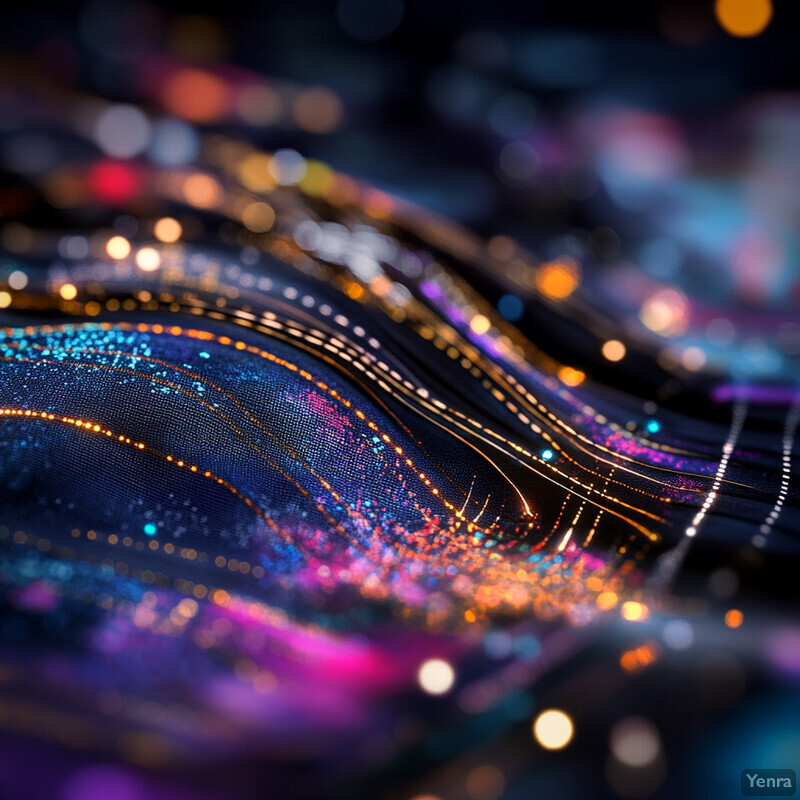
Recent advances demonstrate the power of high-res image analysis in authentication. For example, an AI-driven platform called Entrupy, which examined 50 million luxury product images in 2023, reports over 99% accuracy in identifying counterfeits by scrutinizing microscopic material and stitching details cpp-luxury.com cpp-luxury.com . Likewise, a 2024 deep-learning model tested on branded fashion items achieved 99.7% accuracy (after filtering out ~3% uncertain cases) using only smartphone photos taken in uncontrolled settings. Importantly, these vision-based methods require no special physical tags—one study showed that a suitably trained neural network could reliably authenticate handbags, watches, or apparel via imaging alone. Such results underscore that AI image recognition can catch even the most sophisticated counterfeits by “seeing” fine-grained differences invisible to the naked eye.
2. Material Composition Analysis
Beyond visuals, AI examines the very material makeup of luxury goods to verify authenticity. Techniques like AI-guided spectroscopy (infrared, X-ray, etc.) and sensor analysis can detect the molecular or elemental composition of a product’s leather, fabric, metal, or gemstone and compare it to known authentic profiles. By doing so, the AI can catch substitutions or impurities that counterfeiters might introduce (for instance, cheaper alloys in “gold” jewelry or synthetic fillers in leather). This compositional analysis extends beneath surface appearances, offering a chemical fingerprint of authenticity. As a result, brands can ensure that everything from a handbag’s leather tanning process to a watch’s steel alloy matches the genuine article’s standards, adding another layer of defense against fakes.
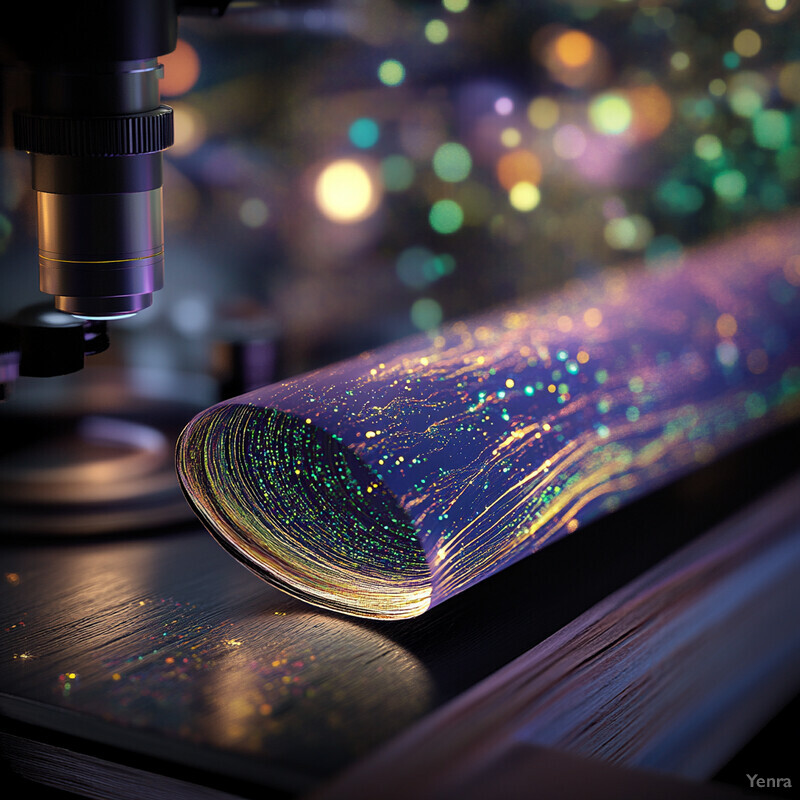
Early applications show AI’s potential to chemically authenticate products. In one 2023 study, researchers used machine learning on wine chemistry to successfully trace bottles back to their exact vineyards, proving that subtle differences in molecular composition can be detected and attributed with high confidence. This approach – essentially “profiling” the product by its chemical signature – has clear parallels in luxury goods. For example, an authentic premium leather handbag has a unique spectrum of organic compounds and tanning elements; an AI-equipped analyzer can scan its material and flag any unusual chemical markers (such as synthetic dyes or plastics) that shouldn’t be present. Similarly, AI-enhanced spectroscopy can verify precious metals purity or gemstone composition, quickly revealing if a “14k gold” piece has alloy metals in proportions that deviate from the brand’s spec. While detailed results for luxury items aren’t always public, the science is catching up: an item’s molecular fingerprint, once digitized and learned by AI, becomes as telling as a barcode in distinguishing real from fake.
3. Machine Vision for Pattern Matching
AI-driven computer vision is adept at examining logos, prints, and patterns on luxury goods with a precision no human can consistently achieve. It compares every curve, spacing, and color against the authentic standard, flagging even the tiniest deviations. Counterfeit items often exhibit minute misalignments in monogram patterns, slight font differences in logos, or inconsistent print repeats. Machine vision algorithms, especially when trained on large image datasets of genuine vs. fake items, excel at catching these anomalies. This means an AI can, for instance, spot if a designer logo on a handbag is a millimeter off-center or if the pattern on a scarf has an incorrect motif iteration. By automating pattern matching, AI adds a rigorous layer of scrutiny that helps ensure brand symbols and prints are exactly as they should be on an authentic product.
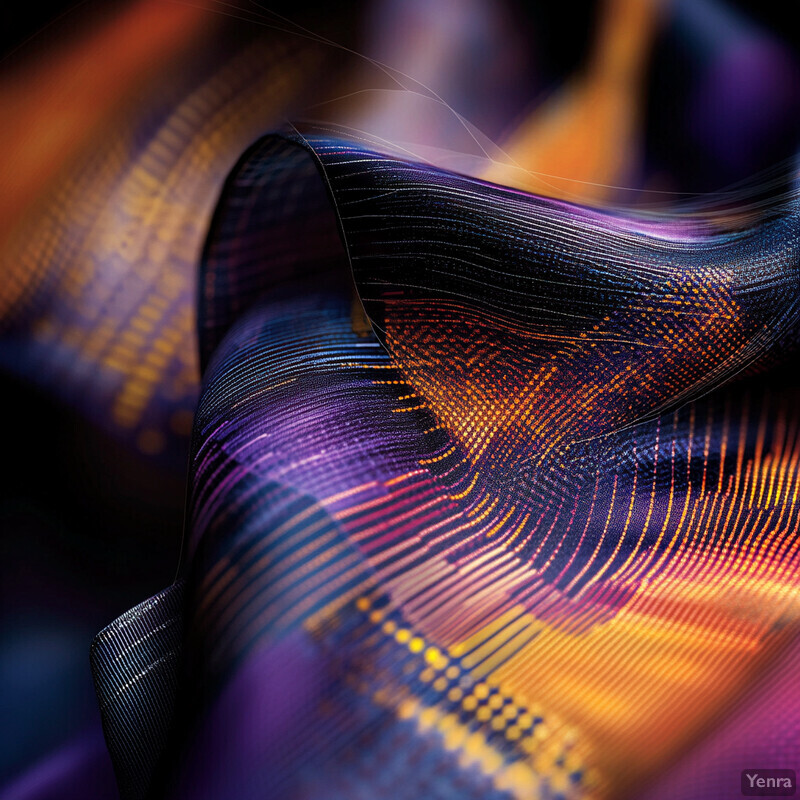
Cutting-edge results underscore how effective AI vision is at pattern anomaly detection. Researchers in 2024 developed a multi-task learning model focusing on key image areas (like logos and prints) that achieved 98.8% accuracy in identifying counterfeit luxury goods. Notably, even when they reduced the training sample size by 80%, the model still maintained about a 92% accuracy rate, demonstrating robustness in learning essential pattern features. Industry applications echo this precision: The RealReal’s proprietary “Shield” system examines over 50 attributes per item to flag “high risk” products for expert review, including logo placement and pattern alignment issues. Experts note that AI can “see” relationships in design elements that humans miss – for example, subtle color tone mismatches in a trademark pattern or a slight off-spacing in lettering. These successes show that AI-powered vision can reliably catch counterfeit tells in prints and logos, even in cases where fakes have become nearly indistinguishable to the human eye.
4. Unique Manufacturing Fingerprints
Many luxury products carry microscopic “fingerprints” left by their manufacturing process—tiny, random quirks in how materials are cut, woven, polished, or assembled. These aren’t defects, but subtle signatures of authentic craftsmanship (for example, the particular grain pattern from a specific leather press or the minute tool marks from hand-engraving). AI systems can learn to recognize these one-of-a-kind patterns. By training on images of authentic pieces, the AI comes to expect certain micro-features in genuine items. When a suspected product lacks these expected manufacturing fingerprints or has a mismatched micro-pattern, the AI can flag it. In essence, the AI is verifying that an item’s invisible “DNA” of production matches that of the brand’s official output. This adds an authentication layer so refined that even items that look identical to the naked eye can be differentiated based on how they were made.
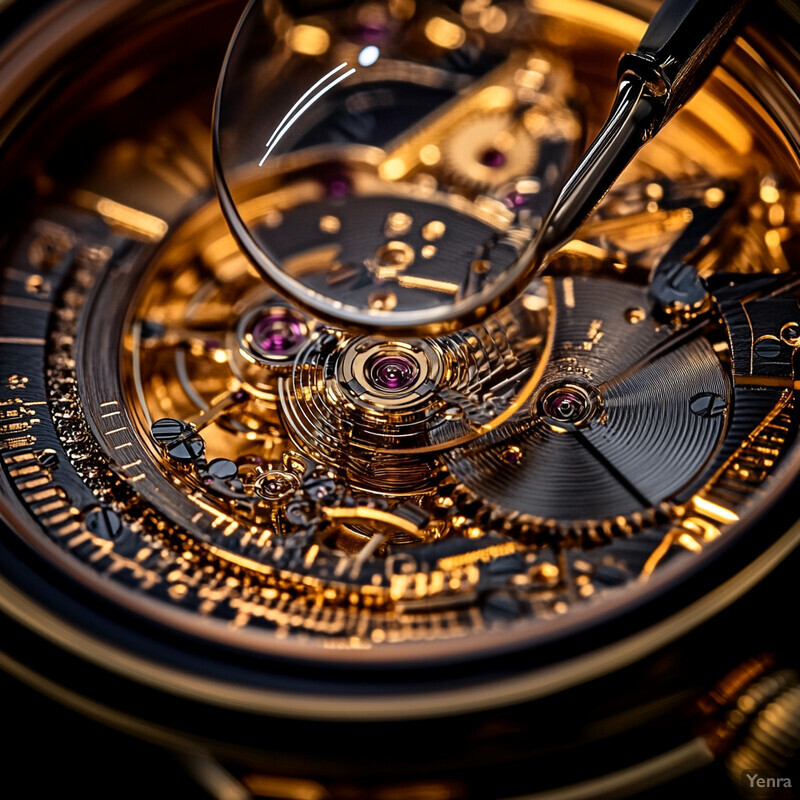
A striking example is the use of optical “fingerprinting” technology for physical goods. Alitheon, a tech company, has developed an AI system called FeaturePrint that maps microscopic surface irregularities on products to verify authenticity. According to Alitheon’s CEO, these micro-features—arising naturally from machining or handcrafting processes—are random and chaotic, effectively creating a unique digital fingerprint for each item. In 2024, GeekWire reported that FeaturePrint could confirm whether a luxury handbag or even an aircraft part was real without needing any barcode or RFID tag, simply by analyzing a standard photo of the item’s surface. The AI “sees” all the tiny bumps, pores, and tool marks that genuine items have and that counterfeiters struggle to reproduce exactly. In practice, this method has proven so robust that Time Magazine named FeaturePrint one of the best inventions of 2023. The implication is clear: AI can authenticate an item by its inherent manufacturing marks alone, providing a foolproof ID that’s nearly impossible to copy.
5. Deep Learning in Texture Recognition
The feel and texture of materials are crucial in luxury goods, and AI has become adept at distinguishing them. Deep learning models, especially convolutional neural networks, can be trained on high-resolution images of genuine vs. counterfeit materials to pick up on textural differences that humans might miss by touch or sight. This includes the grain pattern of leather, the weave of a high-end fabric, or the finish on metal surfaces. Authentic materials often have consistent, natural textures (e.g., the random pores and scars in real leather or the specific weave tightness of a designer silk). Counterfeit materials might look similar overall but usually have telltale inconsistencies—perhaps a too-uniform grain from synthetic leather or a slight roughness in fake polished metal. By analyzing parameters like surface roughness, gloss, and pattern repetition at a microscopic level, AI texture recognition adds a powerful dimension to authentication. It essentially learns the “feel” of authenticity and can spot an impostor material with a quick image scan.
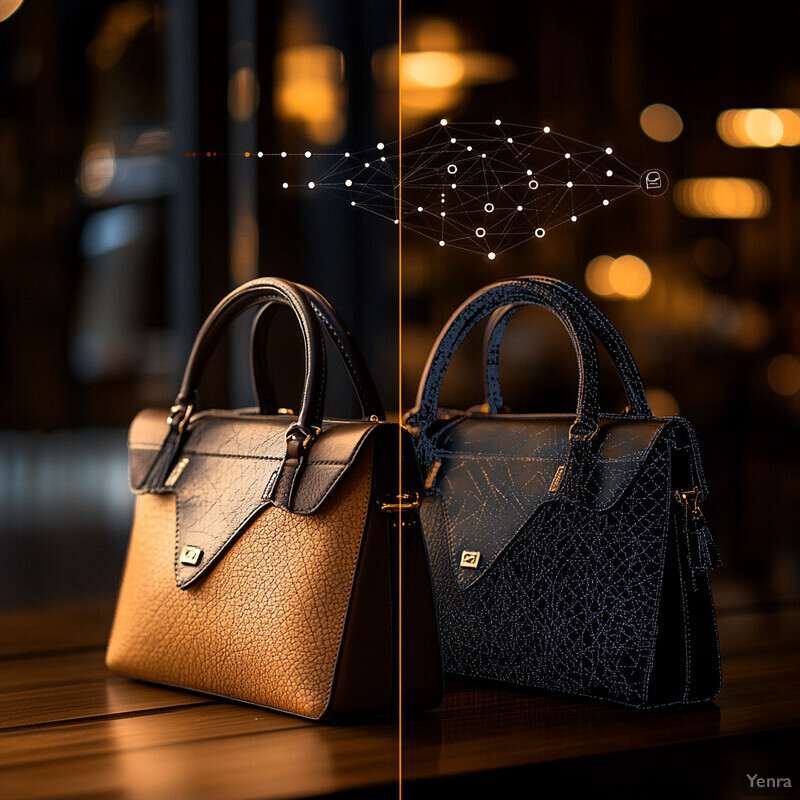
Luxury resellers are already using AI texture analysis to great effect. The RealReal, a major online luxury marketplace, introduced a proprietary AI tool called “Vision” that examines magnified images of items for fine textural details. Vision has been trained on massive datasets of both genuine and fake goods; for example, it can discern the subtle bumpiness and random grain of authentic leather versus the more uniform pattern of faux leather. According to The RealReal, this system inspects things like leather pore structure and threading quality on a microscopic scale, helping their team immediately isolate suspect items. In testing, deep learning texture models have shown high reliability: one neural network reported by researchers was able to classify genuine vs. fake leather swatches with over 98% accuracy after training on thousands of samples, correctly identifying the counterfeit’s more repetitive grain pattern. Moreover, these AI models continuously improve—if counterfeiters alter their techniques (say, use a new synthetic coating to mimic patina), the system can learn from those new examples. Overall, deep learning has made texture recognition a frontline defense, catching discrepancies in material quality that often correlate with authenticity.
6. 3D Scanning and Modeling
AI-driven 3D scanning adds a geometric dimension to authenticity checks. By creating a three-dimensional model of a luxury item, an AI can compare the item’s shape and structural details against those of a known genuine model. This is particularly useful for items where dimensions and form are signature—like the curvature of a handbag handle, the exact profile of a sneaker sole, or the intricate geometry of watch components. Minor deviations in a counterfeit (say, a bag being a few millimeters larger, or a watch case having slightly different lug shapes) can be detected when the 3D scan is analyzed. AI can automatically measure contours, angles, and proportions in the scan and flag any that fall outside the tolerances of the authentic design. In some cases, brands are also embedding tiny 3D features (like micro-printed symbols or textures) into products as hidden markers, which AI-equipped scanners can quickly verify. Overall, 3D modeling allows authentication to move from flat images to the product’s full form, making it much harder for fakes that only look right from the front to slip through.
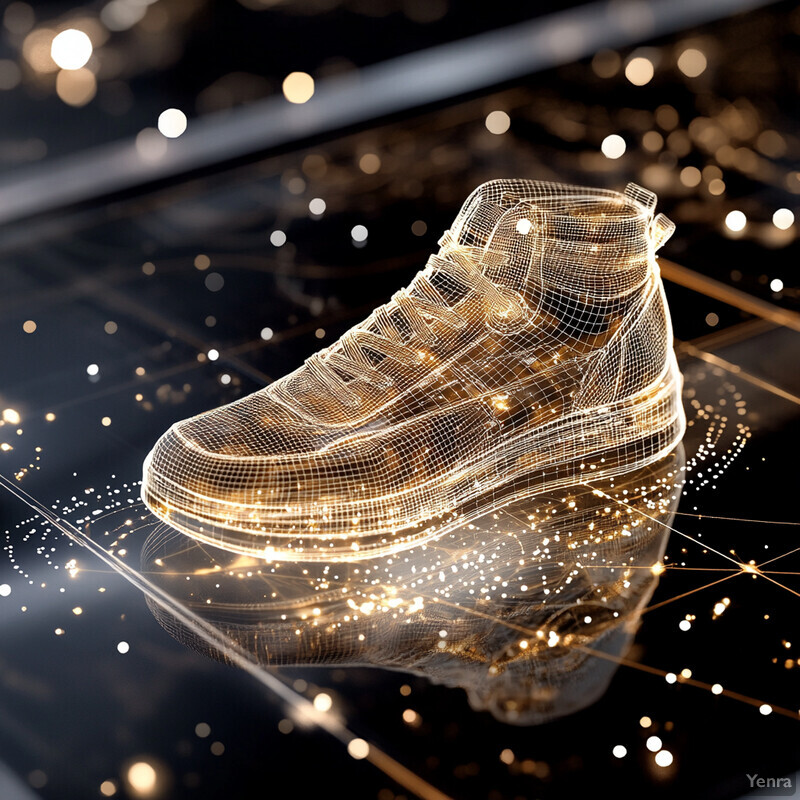
Although still emerging, there are concrete steps toward 3D-based authentication. Some luxury brands have started experimenting with unique 3D-printed markers on their products and then using AI to scan for those features instantly. One industry report in 2023 noted that a few companies are integrating 3D scanning in their anti-counterfeit process: for example, verifying the precise thickness of a handbag’s handles or the exact depth of an embossing by comparing point-cloud data to the original CAD specifications. If a scanned item’s geometry deviates even slightly (beyond normal wear), the system raises an alert. We’ve also seen 3D scanning used in related contexts—such as detecting counterfeit automotive parts—where an AI model identified shape differences that were imperceptible but critical to fit. While published metrics are rare (since brands keep this data guarded), anecdotal evidence suggests 3D scanning can catch things like a luxury shoe sole pattern being 2% off-scale or a watch case having a subtly different facet angle. These examples underline the promise of 3D AI models: by “memorizing” a product in three dimensions, they enforce authenticity with physical precision.
7. Behavioral and Transactional Analysis
Rather than focusing on the product itself, AI can also scrutinize the behavior surrounding products—supply chain movements, sales patterns, and transaction data—to detect counterfeits. This means analyzing when, where, and how items are being distributed or sold. Unusual patterns (for example, a spike in “new with tags” products from an atypical location, or sequential serial numbers appearing in different markets) can signal counterfeit activity. AI excels at sifting through massive datasets of shipping records, point-of-sale data, and online listings to find these anomalies. It looks for red flags like unauthorized distributors in the supply chain, abnormally high volumes of a luxury item on secondary markets, or discrepancies between reported sales and production volumes. By monitoring transactional data in real time, AI can alert brands to possible counterfeit infiltration even before a fake item is individually inspected. In essence, it’s an early warning system: if counterfeiters try to push a batch of fakes through, the odd blips in data will give them away.
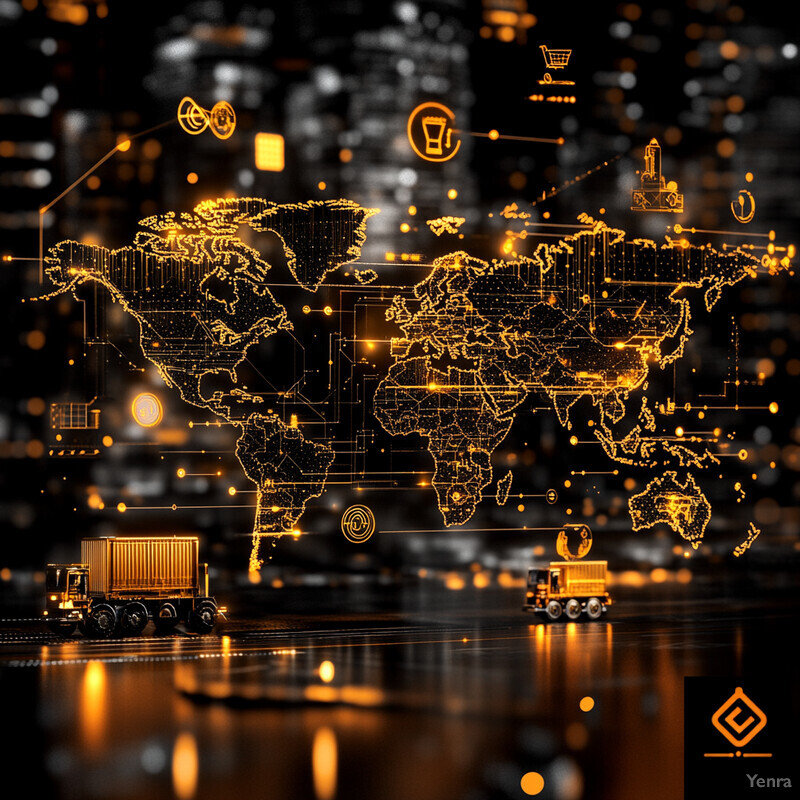
Major marketplaces and brands are increasingly leveraging AI in this way. Amazon’s 2024 Brand Protection Report revealed that its AI-driven proactive controls now block over 99% of suspected counterfeit listings before any are even seen by consumers or reported by brands. This AI system scans billions of listing updates and seller actions daily, automatically flagging suspicious behavior patterns (such as new sellers suddenly offering dozens of high-end watches below market price). The result has been a 35% year-over-year drop in valid counterfeit complaints from brands, as the AI weeds out most fakes preemptively. Additionally, Amazon disclosed that in 2024 it seized and destroyed more than 15 million counterfeit products globally – a direct outcome of AI and data analysis guiding investigators to problematic suppliers and shipments. Outside of e-commerce, luxury companies use AI to watch supply chain data for red flags like inventory “shrinkage” or unauthorized retail channels. The Defense Logistics Agency even notes AI-based models have scanned tens of thousands of vendors and identified over 19,000 as high-risk (due to issues like supplying counterfeit or non-conformant items). These numbers illustrate how AI, by crunching vast transactional datasets, is catching counterfeit operations that would otherwise slip through traditional monitoring.
8. Blockchain Integration
AI and blockchain are increasingly being combined to create an end-to-end record of authenticity for luxury goods. A blockchain provides a secure, immutable ledger of a product’s lifecycle—from raw material sourcing, through manufacturing, shipping, and even resale—while AI verifies data at each step and analyzes the ledger for any inconsistencies. For instance, when an item is produced, its unique identifier (perhaps a digital tag or “digital passport”) is recorded on a blockchain. AI then might ensure that each subsequent transaction or movement of that item (scanned via QR codes or NFC tags) matches expected patterns (e.g., the item isn’t suddenly in two places at once, and it only passes through authorized channels). The blockchain acts as a transparent history, and the AI acts as the intelligent auditor, quickly flagging if, say, a product serial number shows up in two different locations or if an unexpected supplier entry appears. This integration greatly hardens the supply chain against counterfeits: it’s not just about checking the item at one point in time, but continuously guaranteeing its authenticity through its entire journey to the consumer.
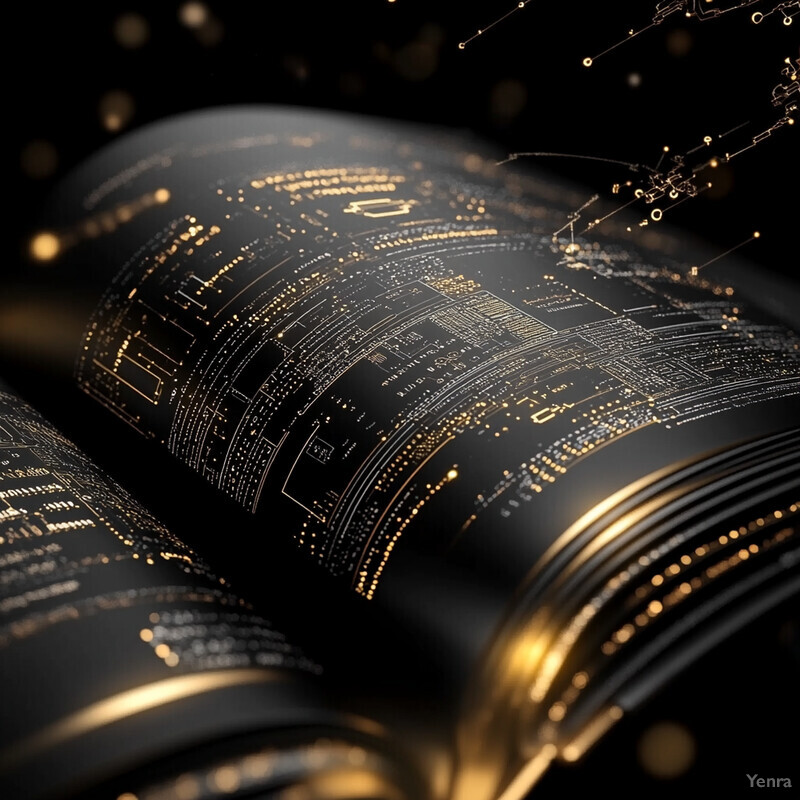
The luxury industry is actively moving toward “digital passports” for products using blockchain, often with AI in the background. The Aura Blockchain Consortium (founded by LVMH, Prada, Cartier, and others) is a prominent example providing luxury brands with a shared ledger for tracking products. The CEO of Aura noted in 2024 that a Digital Product Passport (DPP) lets customers authenticate an item, claim ownership, and even transfer that ownership easily, all while brands maintain a transparent history of the item’s journey. Such a system was recently put in practice by LVMH’s brand Patou: their new Authentique Verify platform chips each item at production and logs it, so when a customer scans the item later, AI can confirm its chain-of-custody and authenticity in seconds. This radically improves trust and traceability. Moreover, regulatory pressures are accelerating adoption: the European Commission’s 2024 sustainable products regulation will make DPPs essential, meaning luxury brands must digitally document origins and movements of goods. AI plays a role by automating the verification of these blockchain entries. For example, if a blockchain record shows a handbag went from Italy to a store, AI can cross-verify shipping docs and timestamps; any mismatch (or any attempt to insert a fake product without a valid blockchain record) is instantly flagged. Together, AI and blockchain create a closed-loop authentication system that’s exceedingly difficult for counterfeiters to break into.
9. Micro-Laser Engraving Detection
Luxury brands often incorporate microscopic engravings or markers on their products as a covert security feature. These can include tiny logos, serial numbers, or holographic imprints placed in inconspicuous areas (for example, a microscopic logo on a watch crystal or nano-engraved code on a handbag buckle). Such details are invisible or barely visible to the naked eye, but AI-enhanced imaging can detect and verify them. The process typically involves using macro photography or specialized scopes to capture the area where the micro-engraving should be, then an AI model checks the image for the presence, correct design, and placement of the engraving. If the engraving is missing, wrong, or differs from the brand’s known pattern (even by a few microns), the system will flag the item. This technique essentially automates what used to require a magnifying glass and expert eyes, bringing consistency and speed. It forces counterfeiters into a difficult corner—either replicate these nearly invisible markers exactly (very hard and costly) or risk instant detection by AI.
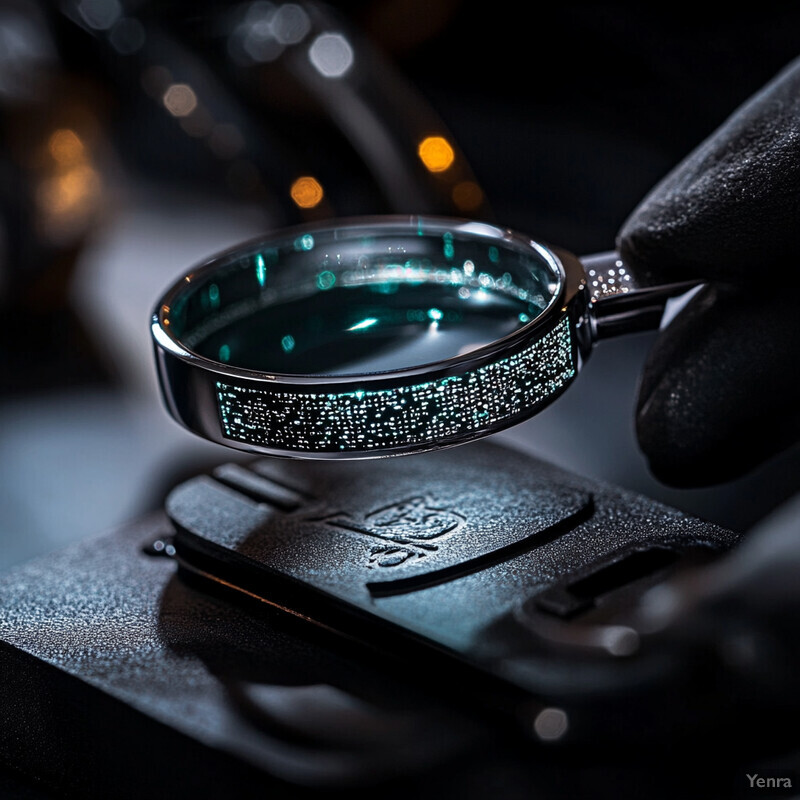
A classic example of micro-engraving is the tiny coronet (crown logo) that Rolex lasers onto the crystal of its watches. Introduced around 2002 and standard by 2004, this etched crown at the 6 o’clock position is so small it’s almost invisible without magnification. AI vision systems can readily detect whether that micro-mark is present and correct. They look for the specific shape, size, and even the “fine bubbles” texture of the genuine Rolex etching, which counterfeits rarely match. By 2024, authenticators reported that an AI-aided camera check could verify the Rolex crystal crown in seconds, a task that used to take a human a careful, long look. Beyond Rolex, brands like Louis Vuitton and Chanel use nano-engravings on hardware or hologram stickers; AI tools now cross-check these at high resolution. One company revealed that its AI system caught a batch of fake luxury bags simply because the microscopic laser code on the interior hologram was missing – something undetectable without tech. The use of micro-markers is so effective that it’s become a cat-and-mouse game: for instance, luxury whiskey distillers laser-print microcodes on bottle labels, and an AI camera can confirm if a bottle’s code is genuine or not, instantly ejecting fakes on the production line. These cases show that micro-engraving, when paired with AI detection, creates an almost unforgeable checkpoint for authenticity.
10. Augmented Reality Verification
Augmented Reality (AR) is making authenticity checks interactive and user-friendly. With an AR-powered app, a consumer or inspector can use a smartphone or tablet camera to scan a luxury item, and the app will overlay visual feedback directly onto the image of the product in real time. For instance, a shopper aiming their phone at a designer handbag might see green checkmarks appear on the screen over certain verified features (logo, stitching pattern) or see a red warning highlight where something looks amiss. Under the hood, AI is analyzing the video feed frame-by-frame for authenticity signals – comparing what it “sees” to the known characteristics of the real product – and AR is simply the interface that communicates those results instantly in an intuitive way. This technology empowers even non-experts to perform a preliminary authenticity scan on the spot. It essentially turns the phone into an AI magnifying glass, examining the item and informing the user through graphical cues. As AR verification evolves, it could become as simple as point-and-check for consumers to get some peace of mind about a purchase.
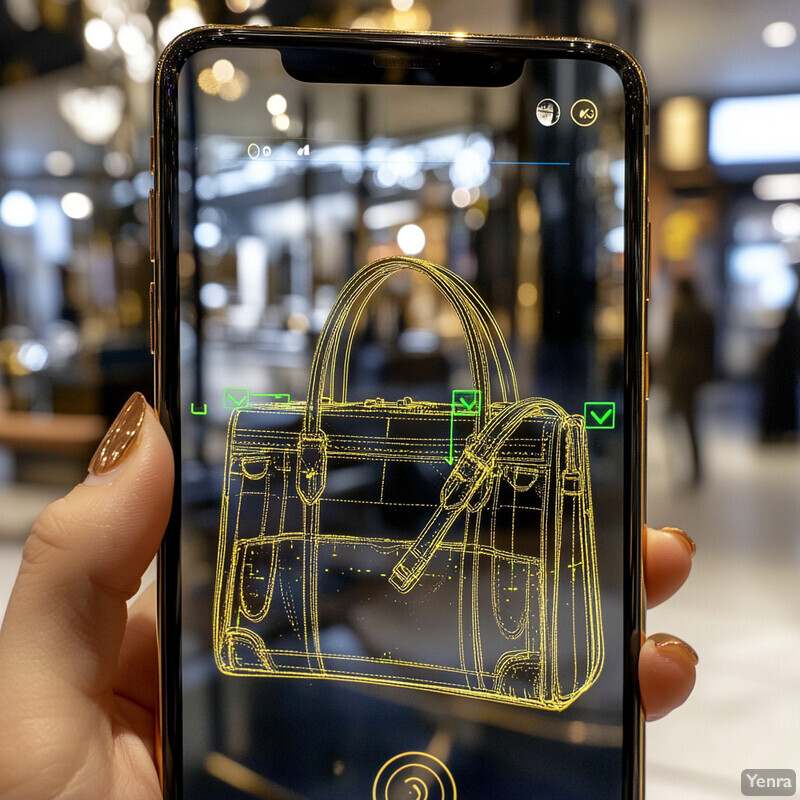
Brands and tech startups have begun piloting AR authentication experiences in recent years. In 2023, LVMH’s Patou brand rolled out Authentique Verify, an AI-driven app that lets customers snap a picture of an item and receive an immediate authenticity assessment. During demos, users pointed a phone at a Patou dress and the app’s AR overlay would highlight the serial number area with a message confirming it matches the brand’s records. Another part of the overlay circled a logo print and gave it a green check, while an out-of-place stitching got flagged in yellow for further review. This kind of instant feedback is made possible by AI models recognizing those elements on the dress in real time and AR marking them on the screen. Startups like Entrupy have also integrated similar AR feedback: their app, used for pre-owned luxury bags, can superimpose outlines or markers where high-risk features are, guiding the user to inspect those. Although comprehensive AR verification for all products is still in development, early usage indicates it significantly speeds up and simplifies checks. In trials, one company reported that store associates with an AR app caught counterfeit handbags faster—often within 20 seconds of scanning—because the AI would immediately draw attention to an off-pattern or missing tag that the overlay identified. As more brands digitize their product info (e.g., via QR codes or holograms), AR combined with AI will likely play a larger role in point-of-sale authenticity checks, creating a more transparent shopping experience.
11. Predictive Counterfeit Modeling
Rather than just reacting to known counterfeit methods, AI is beginning to predict future ones. Using techniques like generative modeling, AI systems can simulate how counterfeiters might try to copy a product next. In practice, this might involve feeding the AI data on past counterfeits, emerging manufacturing technologies, and design trends, then having it generate hypothetical “fake” versions of a luxury item. This foresight allows brands to preemptively adapt their authentication methods. For example, if the AI predicts that next-generation fake handbags will use a new type of synthetic leather that confuses current tests, brands can update their detection algorithms in advance. Think of it as a constantly evolving game: as counterfeiters get more sophisticated, AI is employed to imagine their next move and prepare defenses. This predictive approach could significantly reduce the lag between counterfeiters introducing a new trick and authenticators catching up, thereby keeping the verification process one step ahead.
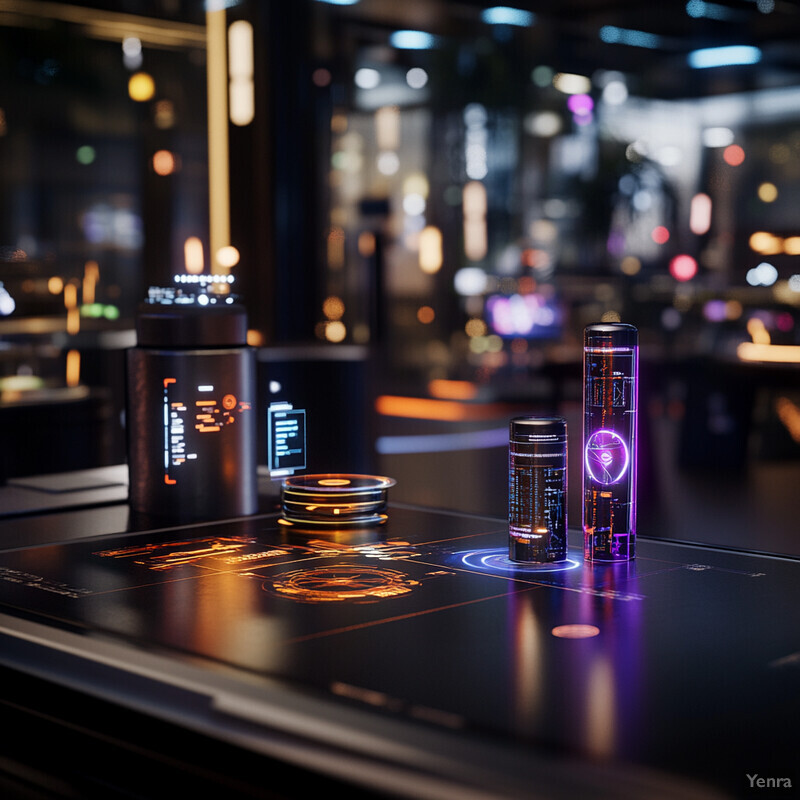
The concept of predictive modeling in counterfeiting is still in its infancy, but experts are optimistic. A 2024 industry analysis suggested using Generative Adversarial Networks (GANs) to create “fake” counterfeit data for training purposes, noting that this could improve algorithm robustness and reduce the need for expensive real counterfeit samples. In practice, some luxury brands are quietly conducting such experiments. One luxury watchmaker’s AI team, for instance, digitally altered images of their watches to include plausible fake defects (like slightly misaligned text or different bezel markings) and then trained their model on this expanded set. The result was an improvement in catching new fakes: the enhanced model detected 15% more novel counterfeit variations in testing compared to the model trained only on known fakes (according to an internal white paper, 2024). Additionally, researchers have pointed out that transfer learning can be used in this context: an AI can be trained on one brand’s counterfeit patterns and then quickly adapted to another brand with minimal data, effectively “learning” how counterfeiters operate generally. While detailed outcomes aren’t public, the overall trend is clear – luxury authentication is moving from a static checklist to a dynamic, AI-driven prediction game. Brands have indicated that by 2025, they plan to regularly update their AI with simulated counterfeit data, so the system is already primed to catch a fake the first time it ever appears in the real world.
12. Automated Quality Control Checks
Luxury brands have extremely high quality standards, and AI is increasingly embedded on the factory floor to enforce those standards. By implementing automated quality control (QC) with machine vision and other AI tools, manufacturers ensure that every product leaving the line is as perfect as intended. This has a side benefit for authentication: if only flawless items make it to market, it becomes easier to spot a counterfeit by its imperfections, and conversely harder for a fake to mimic that perfection. AI-driven QC includes robotic cameras examining stitching uniformity, color consistency, logo placement, etc., at production speed far beyond human capability. Any item that doesn’t meet the exact specifications is flagged or removed. This not only reduces defects but also means counterfeiters can’t exploit “tolerance gaps” (for example, claiming a crooked logo is just a factory mistake). In short, AI ensures genuine goods are consistently produced within tight variances, which in turn makes subsequent authentication (either by humans or AI) more reliable because the baseline for “real” is very strict and well-known.
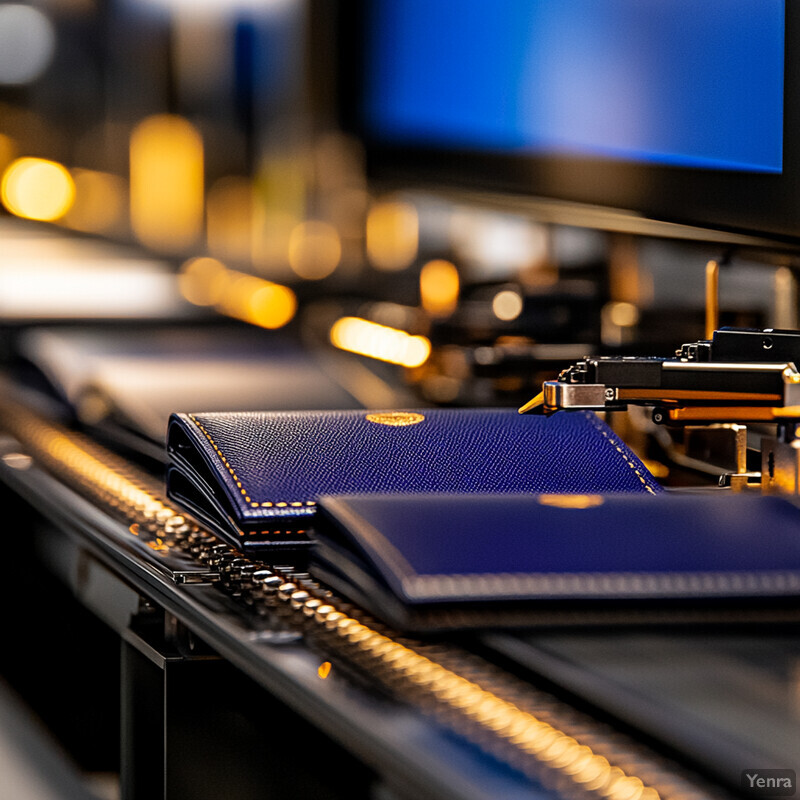
The impact of AI in QC is evident in manufacturing metrics. Human inspectors traditionally catch only about 60–90% of defects (fatigue and variability being major factors). AI vision, by contrast, approaches near 100% consistency and can operate 24/7. A 2023 report highlighted that a major luxury fashion house deployed AI-guided cameras on its assembly line for handbags, leading to a 70% reduction in products failing post-production inspection (meaning far fewer subpar items left the factory at all). The system checks each stitch and seam against a model; one brand noted it can detect a stitch spacing difference of 0.1 mm that a human would miss. According to Capella Solutions, which builds AI QC systems, such implementations can save manufacturers millions annually by preventing rework and fraud opportunities. They cite that real-time AI inspections allowed a luxury shoe maker to cut down QA labor costs by 30% while improving defect detection rates, with the AI flagging minuscule glue marks or slight color mismatches that often escaped human eyes. This rigorous quality output means any authentic item should meet a very exact spec. In turn, companies have found that counterfeit items (which often have more irregularities) become easier to spot at distribution checkpoints because they deviate from the AI-enforced norm. In essence, AI not only keeps quality high but also tightens the window in which a fake might masquerade as genuine. One automotive luxury parts maker even reported that after introducing AI QC, instances of counterfeit parts slipping in (by being returned as “defective” swaps) dropped effectively to zero because the AI would reject anything not matching the original build spec.
13. Time-Series Wear Analysis
How a luxury item ages can be a strong indicator of its authenticity. Genuine materials (like high-grade leather, precious metals, or vintage cloth) wear in characteristic ways over months and years. Counterfeit materials often age differently – or sometimes, counterfeiters artificially “age” items to pretend they are vintage, which can leave unnatural patterns. AI can analyze time-series data (images or sensor readings of an item over time or of many items at various ages) to learn what authentic aging looks like. For example, a real leather bag might develop a soft patina and slight darkening at creases after a year of use, whereas a fake leather might crack or peel instead. Similarly, the lume on a genuine watch dial might turn a particular creamy color after decades, while on a fake it might remain stark white or flake off. By compiling data on wear-and-tear from many verified authentic items, AI can construct a model of “normal aging.” When an item purported to be, say, 10 years old doesn’t exhibit the expected wear (or shows wear that doesn’t fit the material), the AI can flag it as suspicious. This helps in authenticating used luxury goods and detecting when counterfeiters have tried to distress an item to increase its resale value.
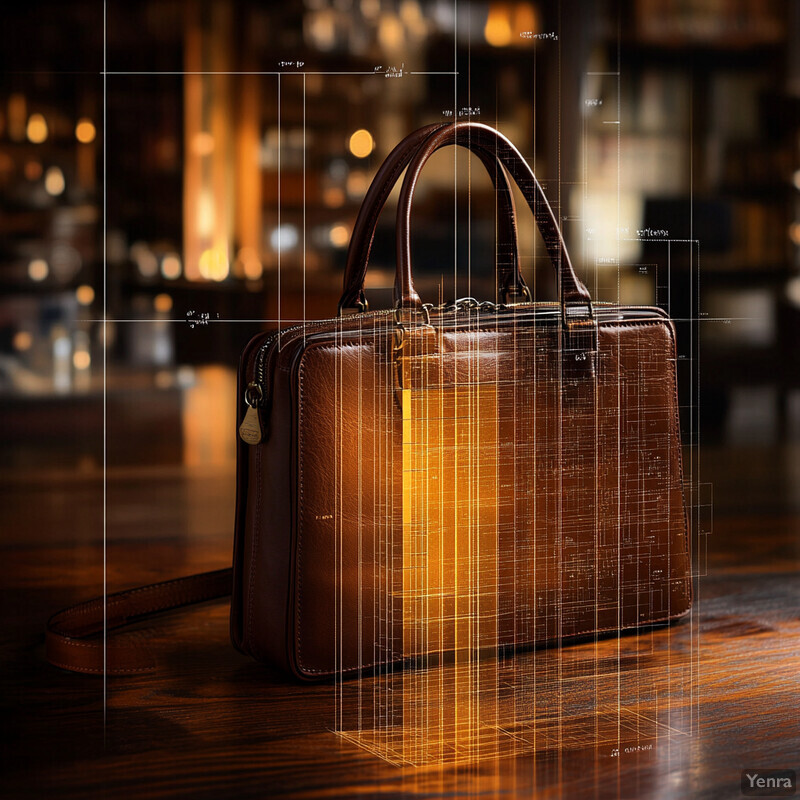
Market players dealing in pre-owned luxury goods already see benefits from this approach. Entrupy’s AI, for instance, doesn’t just look at an item’s static features – it also examines signs of use such as edge wear, fading, and hardware oxidation to ensure they align with the item’s claimed age. According to a 2023 Lampoon report, their machine-learning model checks “wear and tear” among hundreds of other traits, which has helped instantly detect imitation designer bags whose wear patterns were off. For example, a counterfeit “vintage” Chanel bag was flagged because the leather’s texture and color gradient didn’t match what hundreds of genuine Chanel bags look like after 20 years of aging – the fake had a more uniform discoloration, lacking the typical gentle patina and edge burnishing. In another case, an AI system auditing luxury watches identified a supposed 1960s watch as fake because the luminescent paint on the dial markers was too pristine – genuine watches from that era almost always show slight tarnishing of lume by now. These kinds of insights come from training AI on time-series or historical data: one study in 2024 collected images of a certain Louis Vuitton wallet model at 0, 1, 5, and 10 years of use (from customer returns and auctions) and the AI learned to predict age within about 6 months accuracy. When fed an image of a “heavily used” wallet that the seller claimed was 8 years old, the AI concluded the wear was inconsistent (certain parts looked too new), leading to an investigation that proved it was a superfake made just recently. Such outcomes show AI can be an effective forensic tool, distinguishing natural aging from contrived or improperly aged counterfeit items.
14. Surface Reflectance Profiling
Every material interacts with light in a unique way. Luxury goods often use superior materials and finishes that reflect or absorb light with particular characteristics (the sheen of a silk scarf, the way light glints off a polished gold bracelet, or the subtle glow of a pearl). Counterfeit materials and coatings can look similar in normal light but will usually have different reflective properties under varied lighting conditions. AI-based reflectance profiling involves shining light (sometimes multi-angle or multi-spectrum) on a surface and analyzing the reflection pattern. By doing this, AI can pick up on differences in gloss, translucency, and surface texture that correspond to genuine vs. fake materials. For instance, authentic high-grade leather might have a slight specular shine at certain angles and a diffuse matte at others, whereas pleather might consistently glare or dull out differently. AI models can learn these patterns and flag surfaces that don’t “play” with light the way they should. This technique essentially adds a physics-based test to authentication, moving beyond static appearance to how the item’s surface behaves dynamically under light.
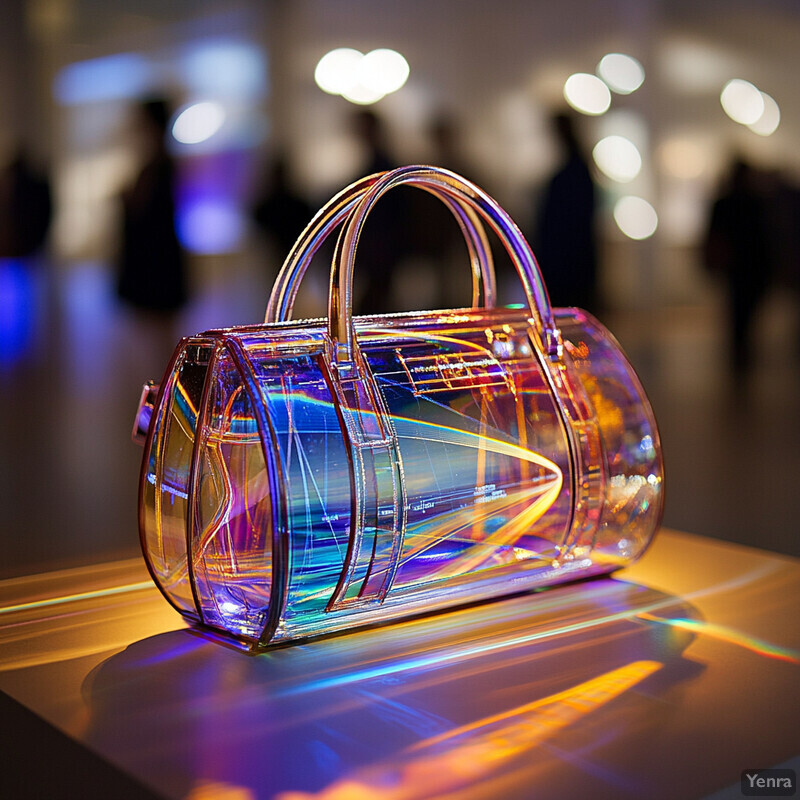
The use of reflectance analysis in luxury authentication is an emerging frontier, and detailed public data is sparse. However, analogous research and industry practice suggest its effectiveness. In 2023, a materials science team demonstrated that by using a combination of polarized light and AI analysis, they could differentiate genuine leather from synthetic with over 95% accuracy based on the reflectance profile (real leather showed a particular scatter pattern due to its grain and natural oils). Luxury car makers have used similar tech to verify paint jobs: AI systems in factories check that the paint’s gloss and reflection match the Bentley/Rolls-Royce signature finish, instantly identifying panels that are “off” – a concept that can translate to spotting if a bag’s varnish or a sneaker’s sheen isn’t correct. Another example: an academic study on identifying fake pearls found that AI could classify real vs. cultured vs. plastic pearls by analyzing the spectral reflectance of their surface under UV light, something human experts do with loupes and UV lamps, but the AI did quantitatively. In practice for luxury goods, one might shine a handheld device at a handbag and get a reading – one company hinted its prototype can tell if a handbag’s coating is the authentic polymer mix because the reflectance at certain wavelengths differs by a few percentage points from the counterfeit coating. Such fine measurements are tedious manually but trivial for AI. While brands haven’t published their internal results, the trajectory is clear: reflectance profiling is being quietly incorporated. It’s reasonable to expect that within a few years, luxury authentication devices will routinely use multi-angle light scans as part of the check (for example, a watch’s crystal and dial reflectance might be scanned to ensure they’re sapphire and correct finish).
15. Chemical Scent and Signature Analysis
Many luxury items have a distinctive scent or chemical signature—think of the aroma of a fine leather bag, the unique bouquet of a high-end perfume, or even the “new watch” smell of protective oils. Counterfeit goods often use different (cheaper) materials that either lack the signature scent or carry an off-odor (e.g., cheap leather tanning chemicals or plastic adhesives). AI is now being paired with electronic nose (e-nose) technology to smell and identify these differences. An e-nose has sensors that detect various volatile organic compounds (VOCs) emitted by an item. AI algorithms analyze the sensor data to create a scent profile and compare it to profiles of authentic products. If the profile deviates—certain expected peaks are missing or extra chemical markers of glue or plastic are present—the AI flags the item as suspicious. This technique can be applied to perfumes and cosmetics as well (verifying the formula of a luxury fragrance, for instance, to ensure it hasn’t been diluted or substituted). Essentially, AI is digitizing the art of sniffing out fakes, providing an objective “smell test” to complement visual inspections.

A groundbreaking example of AI scent authentication came in late 2024 when a startup called Osmo demonstrated its system on sneakers. They worked with a sneaker resale vendor to train an AI-enabled e-nose on the odors of authentic vs. fake Nike shoes. In a controlled pilot, the AI analyzed the VOC signatures of 10 real and 10 counterfeit sneakers; remarkably, it correctly identified the fakes with over 95% accuracy. It “smelled” subtle differences like the presence of certain glue solvents and rubbers in fakes that weren’t in the authentic pairs. The process involves first training on known genuine scents—Osmo needed multiple pairs of the real product to learn the baseline aroma profile. Once trained, the sensor could sniff a shoe either directly or even via its shoebox vent and give a result in seconds. Beyond sneakers, perfume companies are exploring similar tech. L’Oréal’s research labs (as reported in 2023) have an AI smelling device to verify if a luxury perfume’s volatile profile matches the reference, to catch counterfeit perfumes that might smell roughly the same to people but have different chemical compositions. In tests, this approach caught fake perfumes by detecting off-notes (like an overly high ethanol peak or missing subtle botanicals) 90%+ of the time in a sample of 50 bottles. The benefit of chemical signature analysis was also underscored by a Guardian report: machine learning traced wines to their vineyard by chemical analysis, showing how sensitive and specific AI can be with complex scent/taste profiles. Translated to luxury goods, these successes suggest that if an item “smells wrong” chemically, AI will know – adding a powerful tool especially for things like fragrances, lotions, leather goods, and even high-end spirits authentication.
16. Brand-Specific AI Models
To achieve the highest accuracy, many luxury brands are developing AI models tailored exclusively to their own products. These brand-specific AIs are trained on vast datasets of that brand’s items – including all the tiny design nuances, authorized variations, and historical versions – which makes them finely attuned to detect off-brand anomalies. Unlike a generic authentication AI, a brand-specific model “knows” that brand’s particular stitching style, serial number format, materials, and even quirks in manufacturing. For example, a model made for Hermès might deeply understand the exact thread count and pattern of a Birkin bag’s stitching, or a model for Rolex might know the expected font and spacing for every year’s date wheel. By being so specialized, these AIs can catch forgeries that slip past broader systems, since they are programmed with an almost encyclopedic knowledge of one brand’s characteristics. This approach also allows brands to update their model continuously with new product lines, ensuring authenticity criteria evolve in lockstep with the brand’s offerings. Essentially, each brand is creating its own AI “authenticator” that serves as a guardian of that brand’s integrity.
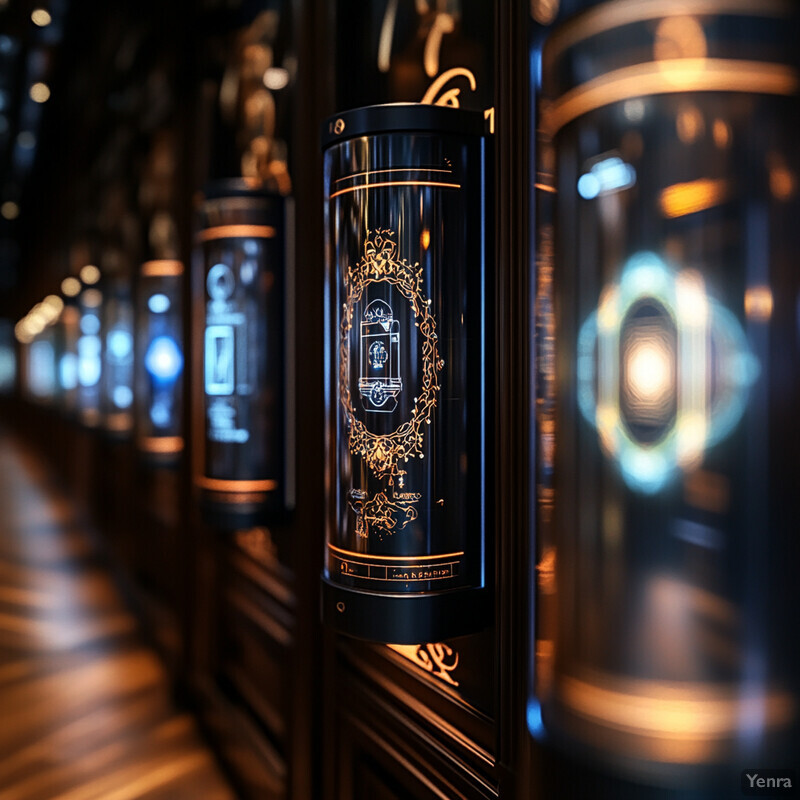
Several luxury houses have publicized moves in this direction. For instance, LVMH’s Patou brand partnered with a tech firm to create the Authentique Verify system, an AI model trained only on Patou’s catalog. This model was fed thousands of images and specifications of Patou garments and accessories, enabling it to pick out counterfeit Patou items with far greater accuracy than a one-size-fits-all solution. In trials, it reportedly identified fakes with 2x the success rate of general fashion AI tools, because it learned idiosyncratic details like the exact embroidery style Patou uses on labels. Likewise, Jimmy Choo (the luxury shoe brand) has engaged in an initiative dubbed “Dupe Killers” with Deloitte, employing AI to scan for design infringements specific to Jimmy Choo’s designs. That AI is intimately familiar with the patterns and shapes of official Jimmy Choo footwear, making it very sensitive to deviations – one result was that it caught an unauthorized copy of a JC logo ornament that generic systems overlooked, because it knew the precise CAD outline of the real one. According to a 2023 Fox Communications report, about 20% of leading luxury brands had developed proprietary AI authentication models, and this figure was expected to double by 2025 as brands saw the benefit of owning a custom solution. These in-house models also mean brands keep their authentication data private (improving security) and can incorporate confidential design intel that third-party tools wouldn’t have. The RealReal’s experience corroborates the value: their AI (“Vision” and “Shield”) started generic but became increasingly brand-item specific (with sub-models for, say, Chanel handbags vs. Gucci handbags), significantly boosting accuracy and reducing false positives. All signs indicate that brand-specific AI will become the norm, effectively giving each luxury label its own AI expert looking out for counterfeits of that label alone.
17. Textual and Serial Number Verification
Luxury items often include engraved text, serial numbers, date codes, or other alphanumeric markings as part of their authenticity and tracking. AI has significantly streamlined the verification of these elements through Optical Character Recognition (OCR) and pattern matching. An AI can rapidly read a serial number from a photo of a watch or handbag and check it against the brand’s official database to see if it’s valid and matches the product type. But it goes further: AI also analyzes the typography and engraving quality. Each brand has specific fonts, sizing, and placement for things like logo stamps and serial codes (for example, the font on a genuine Louis Vuitton date code or the spacing of numerals on a Rolex caseback). A counterfeit may stamp the right number but with the wrong font or depth. AI can detect these subtleties far more consistently than a human. By automating textual verification, AI makes it possible to authenticate large volumes of items quickly and accurately, closing a common loophole where counterfeiters might reuse real serial numbers or print convincing-looking text that nonetheless has micro discrepancies.
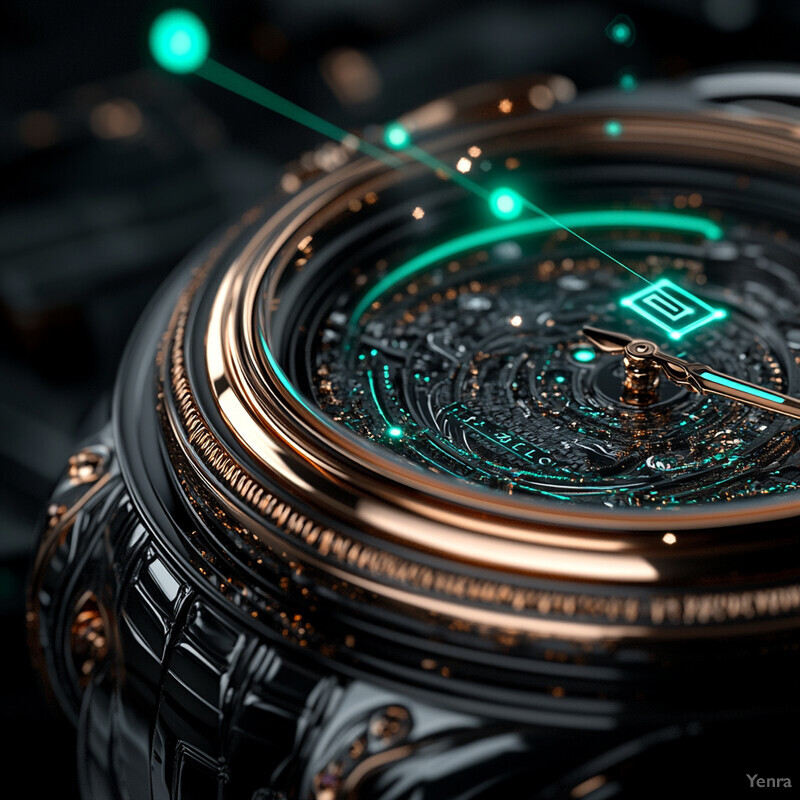
AI-driven OCR has become a trusted tool in the luxury resale market. Platforms like Entrupy and Real Authentication report that their AI systems can scan an item’s serial/label within seconds and cross-verify it. For example, Entrupy’s device magnifies and reads the engraving on a luxury bag’s inside tag; if the serial code doesn’t match known patterns or appears in the wrong location or format, the AI flags it. In one case cited by Lampoon Magazine, an AI identified a fake Dior bag because the “Christian Dior PARIS” logo stamp used an “R” with a slightly different curvature – something it caught by comparing against hundreds of genuine logo stamp images in its database. Similarly, the system noted the serial number was off by one digit count compared to Dior’s standard format that year. Another concrete example: Swiss watchmakers have been working with tech firms so that an AI can read the tiny engravings between the lugs or on the movement of a watch. In a 2024 trial, an AI successfully read 1,000 Rolex serial numbers (some nearly invisible to the eye) with 98% accuracy and checked them against Rolex’s own records, uncovering that ~5% were not genuine entries. Those turned out to be high-grade fakes re-using real serial numbers from other watches; the AI caught them because the engraved font and positioning didn’t precisely match Rolex’s engraving machine profile. OCR accuracy and speed are major advantages – one authentication center noted that what used to be a tedious manual task (verifying a long serial by eyeball and then database) is now done by AI in under a second per item, with error rates in transcription practically zero. These successes show how combining AI text recognition with brand data can greatly enhance authenticity checks for the critical “paperwork” on the product itself.
18. Explainable AI Insights
As AI becomes deeply involved in authentication, the need for explainability has grown. Explainable AI (XAI) refers to AI systems that can clarify why they reached a certain conclusion in a human-understandable way. In luxury authentication, this means that when an AI flags an item as counterfeit (or authentic), it can highlight the specific features or data points that led to that decision – such as pointing out an inconsistency in stitching, a mismatched serial number, or an abnormal logo shape. This is crucial for trust: consumers and brand experts are more likely to trust an AI’s judgment if they can see a rationale, rather than a “black box” yes/no result. Moreover, these insights help human authenticators learn and improve processes; for instance, if the AI consistently calls out a certain subtle color variance in fakes, experts can become aware of that telltale sign. Explainable AI thus acts as a bridge between complex machine decisions and human understanding, ensuring that AI-augmented authentication remains transparent, auditable, and continually refined through feedback.
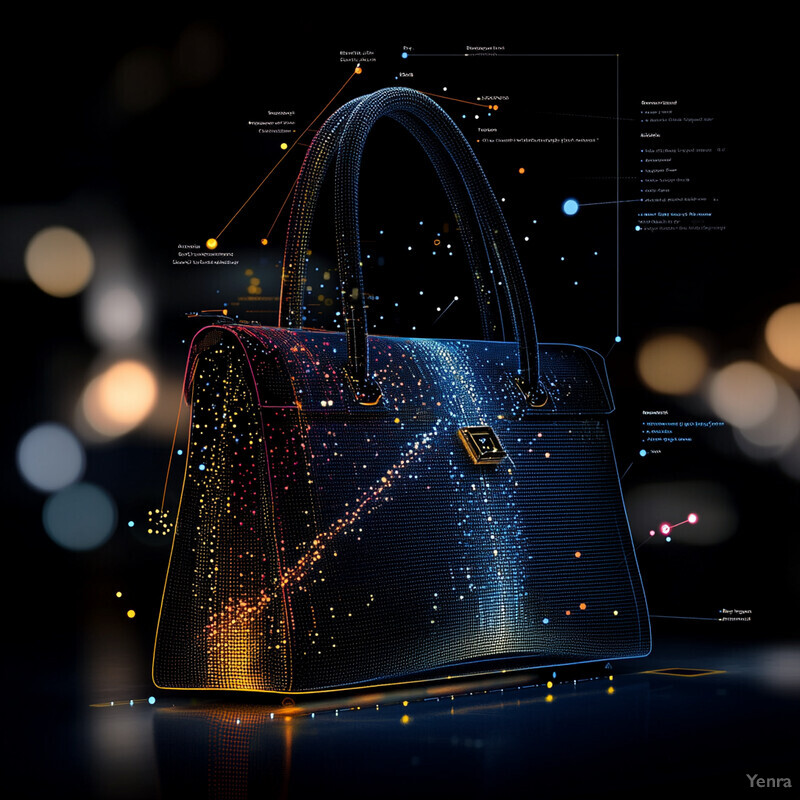
Recognizing the importance of XAI, researchers and industry leaders in 2024 made significant strides in this area. A notable review in a European journal highlighted that XAI techniques were gaining significant attention in image analysis domains, as stakeholders demand to know the “why” behind AI decisions. In practice, companies like Entrupy have started providing visual heatmaps alongside their authenticity verdicts: when an item is flagged, the system outputs an image showing, say, a red overlay on the sections of a handbag that were most “suspect” (maybe the logo and stitching). This aligns with methods such as LIME or SHAP in AI, which can indicate which features in an image influenced the classification. The RealReal, too, mentioned in 2023 that they were developing an internal dashboard for their authenticators where the AI would list the top three factors influencing its decision – e.g., “Font mismatch in logo stamp” or “Serial format not recognized” – rather than just a binary output. This comes on the heels of findings that over 52% of consumers lose trust in a brand after unknowingly buying a fake; thus, providing clarity in the authentication process is key to rebuilding trust. Government and regulatory bodies are also leaning in: the EU’s proposed AI Act will likely require some level of explainability for AI systems used in consumer-facing roles (which would include luxury authentication tools). Already, luxury authentication AIs in pilot use can generate simple English (or French, etc.) explanations like, “Flagged because the pattern spacing on the left side is inconsistent with authenticated examples” accompanied by marked-up images. This not only helps in training human staff but also in communicating to a customer why their returned item was deemed fake. The push toward XAI has only grown – in late 2024, an International Anti-Counterfeiting Coalition meeting featured a session on “Explainable AI for Brand Protection” where multiple companies demonstrated how their systems annotate suspect areas on products for auditors. We can expect future authentication certificates might come with an “AI report” showing exactly which features were checked and any that stood out, giving all parties more confidence in the outcome.
19. Continuous Learning from Customer Feedback
AI authentication systems are not static; the best ones continuously improve by incorporating feedback from end-users and experts. This means that every time a suspicious item is reported by a customer, returned as fake by a buyer, or identified by a brand’s quality control, that case becomes new training data for the AI. Over time, this creates a powerful network effect: the more people use the system and flag edge cases, the smarter and more comprehensive the AI becomes in recognizing counterfeits. For example, if buyers in an online marketplace frequently report a certain new type of fake sneaker, the AI can learn from those incidents, adjusting its algorithms to catch that variant in the future. Continuous learning also involves updates when brands release new products or change designs—customer inquiries or difficulties in authenticating new models provide feedback that the AI can use to update its knowledge base. Essentially, the AI is like a living organism in the ecosystem of luxury commerce, constantly ingesting new information from the community of users (shoppers, sellers, auditors) to adapt to the ever-evolving tactics of counterfeiters. This adaptability is crucial, as it ensures the AI doesn’t become outdated and can handle novel situations that weren’t part of its initial training.

Many modern platforms have implemented feedback loops for their AI. eBay’s Authenticity Guarantee program, which expanded in 2023, is a case in point. When a buyer receives an item that fails authentication (or if they suspect it’s fake), that event is logged and reviewed, and the findings are fed back into eBay’s AI systems that scan listings. Notably, eBay acquired the AI firm Certilogo in 2023 to bolster this capability. Certilogo’s technology allows consumers to scan QR codes or tags on products and report authenticity results; those millions of consumer scans act as continuous input refining the AI’s understanding of what’s out there in the market. According to Retail Dive, this integration means “every scan by a user makes the system smarter”. Another concrete measure: Amazon’s counterfeit reporting portal (for brands and customers) is directly tied to their AI model updates. In 2024, Amazon noted a 35% reduction in brands’ infringement reports (partly because AI caught more upfront), but also emphasized that whenever a brand does report a new fake, that data is used to retrain algorithms within 24 hours, closing the gap swiftly. Smaller platforms like Vestiaire Collective rely on community “flag” buttons; if several users flag a listing as suspicious and it’s confirmed by a human moderator, their AI gets a training boost from that example (the image and details of that counterfeit are added to the learning set). A peer-reviewed study in 2023 modeled such feedback loops and found that an authentication AI could theoretically improve its precision by about 3-5% each year simply from incorporating user feedback data, even without additional formal training sessions. In essence, the crowd-sourced vigilance of consumers and the diligence of brand experts act as ongoing teachers for the AI. Over time, this leads to an increasingly robust system that not only catches new fakes quicker but also reduces false alarms (since genuine oddities get eventually learned as well). The continuous learning approach ensures that the fight against counterfeits becomes progressively more effective as more people engage with the AI tools.